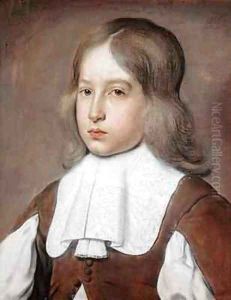Christiaen Jansz. Dusart Paintings
Christiaen Jansz. Dusart was a Dutch Golden Age painter and engraver, known primarily for his genre scenes and landscapes. He was born in 1660 in Haarlem, Netherlands, into a family with artistic connections; his uncle was the well-known painter Cornelis Dusart. Despite the familial link, not much is documented about Christiaen’s early life or training, which was common for many artists of the period.
Dusart’s work was influenced by the Haarlem school of painting, which was characterized by fine detail, a high degree of realism, and often an emphasis on everyday life. His paintings frequently included scenes of peasants and country life, showing a clear influence from Adriaen van Ostade, a prominent Haarlem genre painter who was also related to Christiaen through his uncle Cornelis.
Although Dusart’s artistic career was not as distinguished or well-documented as some of his contemporaries, he managed to create a body of work that was appreciated for its attention to detail and its depiction of the rustic life of his time. Like many artists of the Dutch Golden Age, Dusart was also skilled in printmaking. Engravings were a popular medium for reproducing artworks and disseminating them to a broader audience, and Dusart contributed to this tradition.
Christiaen Jansz. Dusart’s career was relatively short-lived; he died in 1704 at the age of 44. The reason for his early death is not recorded, but his works continue to be studied and appreciated for their contribution to the genre painting of the Dutch Golden Age. Dusart’s death marked the end of a modest but meaningful career in the Dutch art world, during one of its most prolific and celebrated eras.
